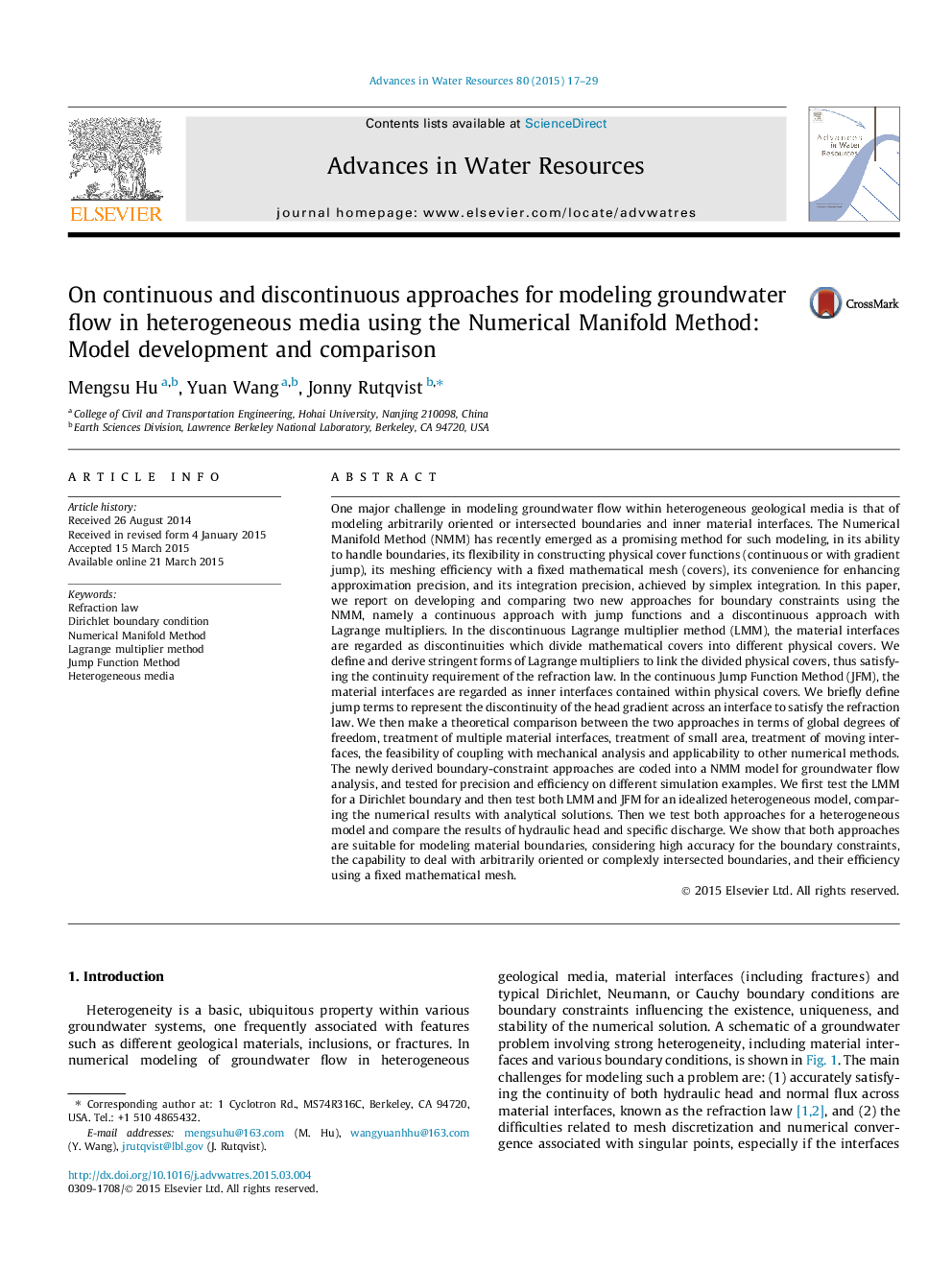| کد مقاله | کد نشریه | سال انتشار | مقاله انگلیسی | نسخه تمام متن |
|---|---|---|---|---|
| 4525391 | 1625629 | 2015 | 13 صفحه PDF | دانلود رایگان |
• Increased-order NMM with a fixed mesh was adopted for modeling flow in heterogeneous media.
• A discontinuous method (LMM) with divided physical covers was developed.
• A continuous method (JFM) with jump-term contained physical covers was developed.
• A thorough theoretical comparison between LMM and JFM was made.
• The accuracy, efficiency and capability of the two approaches were verified.
One major challenge in modeling groundwater flow within heterogeneous geological media is that of modeling arbitrarily oriented or intersected boundaries and inner material interfaces. The Numerical Manifold Method (NMM) has recently emerged as a promising method for such modeling, in its ability to handle boundaries, its flexibility in constructing physical cover functions (continuous or with gradient jump), its meshing efficiency with a fixed mathematical mesh (covers), its convenience for enhancing approximation precision, and its integration precision, achieved by simplex integration. In this paper, we report on developing and comparing two new approaches for boundary constraints using the NMM, namely a continuous approach with jump functions and a discontinuous approach with Lagrange multipliers. In the discontinuous Lagrange multiplier method (LMM), the material interfaces are regarded as discontinuities which divide mathematical covers into different physical covers. We define and derive stringent forms of Lagrange multipliers to link the divided physical covers, thus satisfying the continuity requirement of the refraction law. In the continuous Jump Function Method (JFM), the material interfaces are regarded as inner interfaces contained within physical covers. We briefly define jump terms to represent the discontinuity of the head gradient across an interface to satisfy the refraction law. We then make a theoretical comparison between the two approaches in terms of global degrees of freedom, treatment of multiple material interfaces, treatment of small area, treatment of moving interfaces, the feasibility of coupling with mechanical analysis and applicability to other numerical methods. The newly derived boundary-constraint approaches are coded into a NMM model for groundwater flow analysis, and tested for precision and efficiency on different simulation examples. We first test the LMM for a Dirichlet boundary and then test both LMM and JFM for an idealized heterogeneous model, comparing the numerical results with analytical solutions. Then we test both approaches for a heterogeneous model and compare the results of hydraulic head and specific discharge. We show that both approaches are suitable for modeling material boundaries, considering high accuracy for the boundary constraints, the capability to deal with arbitrarily oriented or complexly intersected boundaries, and their efficiency using a fixed mathematical mesh.
Journal: Advances in Water Resources - Volume 80, June 2015, Pages 17–29
